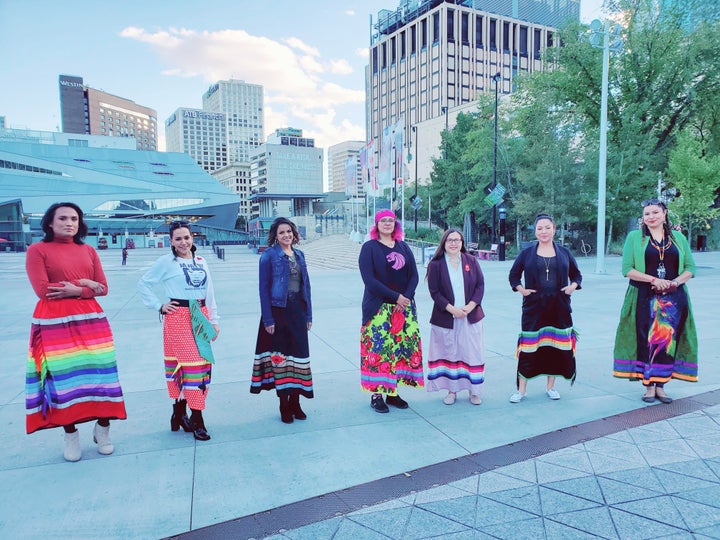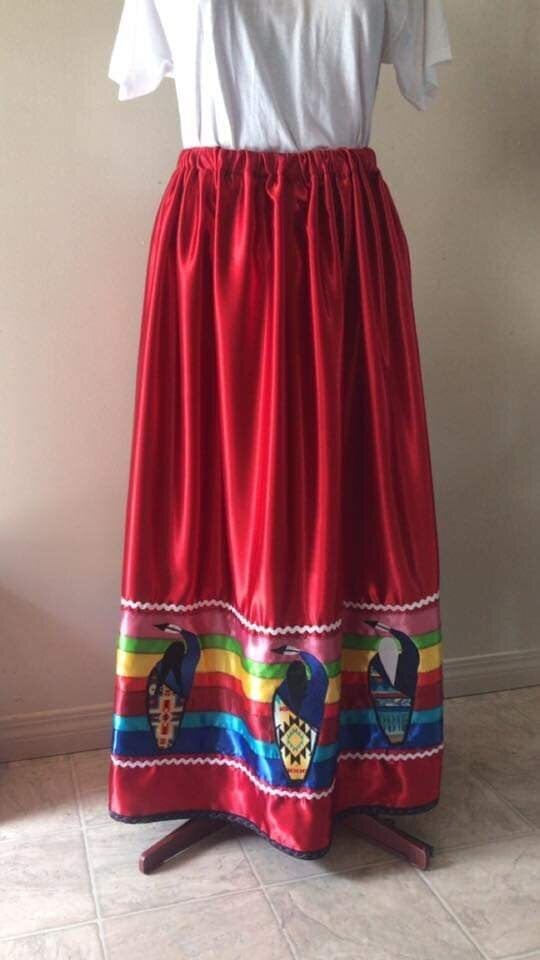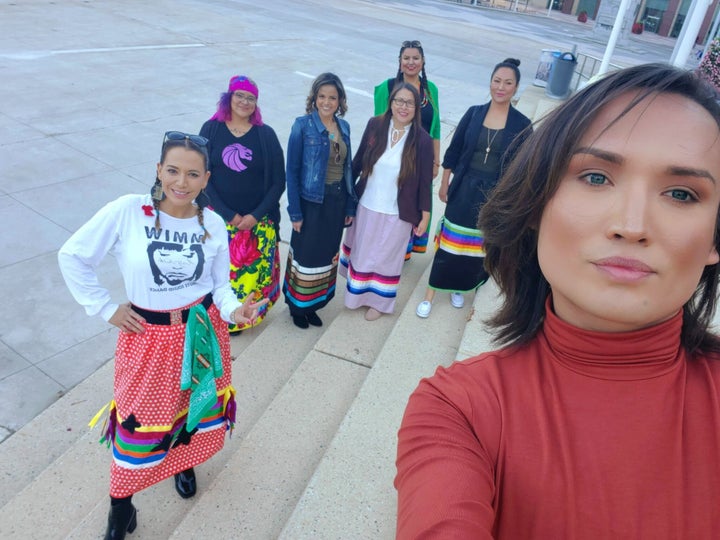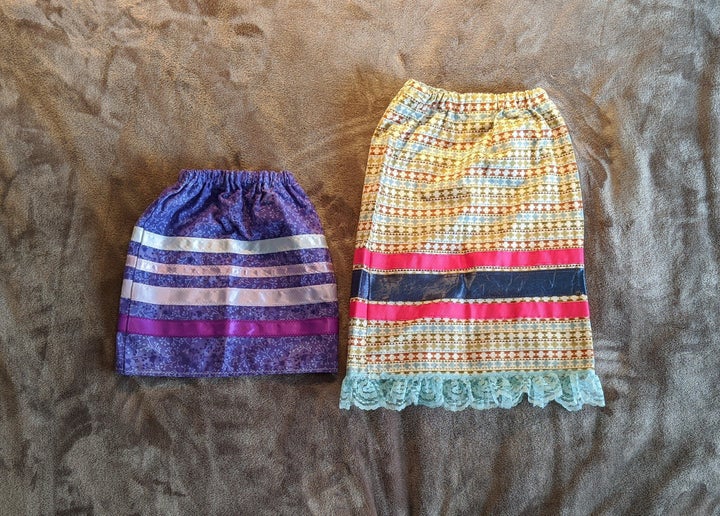
Chevi Rabbit was looking forward to a relaxing group dinner in downtown Edmonton in late August, surrounded by women dressed as colourfully as she was: They had just wrapped a rally that taught attendees about anti-Indigenous racism and were wearing their ribbon skirts.
However, fellow customers were visibly displeased and made faces when they saw the Indigenous women in their brightly patterned traditional clothing.
“I sat there thinking, ’This is so uncomfortable. This isn’t right,’” Rabbit told HuffPost Canada. Their treatment reminded the long-time community advocate of the racism faced by Sikhs who wear turbans, as cultural symbols are often targeted by prejudiced Canadians.
The hurt Indigenous women feel over discriminatory encounters like this led Rabbit calling on other women leaders in the area to organize “Walk A Mile In A Ribbon Skirt,” an event that will be held in Edmonton on Sept. 26 where people of all backgrounds can learn about about the skirt’s significance and hear the perspectives of Indigenous women in Canadian cities.
Rabbit calls the event a way of “re-Indigenizing Edmonton” and it’s already inspired a solidarity walk in Quebec, by the Mohawk community of Kahnawà:ke.
She and Katherine Swampy, a fellow organizer and Samson Cree Nation councillor, spoke to HuffPost Canada about the campaign, along with their personal connections to the garment.
Why are ribbon skirts significant to Indigenous women?
Swampy: When you look at history, traditional attire was just attire. There is some regalia that’s considered sacred, but ribbon skirts are versatile. It can be used for ceremony, but some of us, like myself, wear our ribbon skirts every day.

When I go out, sometimes I’m faced with prejudice. There is constant ridicule of our traditions. In the last federal election, I ran as a candidate for Edmonton Centre and I wore a ribbon skirt every single day. For the most part, everybody loved them. But on three separate occasions, I was actually called Pocahontas. When I ran for the NDP in the 2015 election, I had doors slammed and people spitting in my face.
But this is our home, this is where we belong, and we should be allowed our practices. Most of the time, I’m met with pride. Indigenous people see me and they may want to wear one too.

Rabbit: For some, it’s like medicine or like armor. What it really represents in a contemporary setting is empowerment. We survived cultural genocide, discrimination, and every trick in the book by the colonial government. We’re still here.
From my perspective as a trans Two-Spirit Cree woman, wearing a ribbon skirt is a symbol of femininity. We face transphobia and homophobia on top of misogyny and racism.
How can people show their ribbon skirt pride at home?
Rabbit: We’re running the online #MyRibbonSkirt challenge on social media right now, where we’re asking women to share their unique stories [with the hashtag], as everyone’s got a different story about their skirts.
Why do you cherish your ribbon skirts?
Rabbit: It’s my first ribbon skirt! Mine has a rainbow, it’s very colourful, and it was designed by a Cree designer. I’m from the Rabbit family in Maskwacis and I’ve watched my aunties in their skirts all my life. For me, it represents Two-Spirit culture being repatriated into Indigenous culture, with trans women included.
However, growing up I felt ashamed of my culture. When I went to Edmonton to become a makeup artist, that feeling made me try to hide myself. When I came back to work for my nation and started re-connecting, my skirt became a symbol of all the gender diversity work I’ve been doing in Alberta. It’s been a really positive experience for me.
Swampy: We just had our inauguration for Samson Cree Nation, where we elected six women; we have an equal number of women and men in our municipal leadership. All the women wore our skirts at the event and I hope those who saw us felt inspired to get involved too.
What are the barriers Indigenous people may face when it comes to wearing a ribbon skirt?
Swampy: You can look as far back as when people are going to residential schools, with the Indian Act. We were not allowed to wear our traditional attire; you couldn’t look Indigenous. Canada instilled in a large number of people that this is wrong somehow, ribbon skirts are something that was taboo.
Some people don’t know how to sew the ribbon skirts, some people are afraid and they don’t know the protocols. There’s also financial barriers, as many communities are plagued by poverty. Because of this, we’re actually collecting a large number of donated skirts for the event and we’re going to be providing them to those who need one.

Rabbit: Urban Indigenous people don’t often have the opportunity to connect with culture. They’re just trying to survive under oppression. They’re struggling and we need to gift them with a ribbon skirt. That’s why I did a call to action to seamstresses and other organizations to donate, so that when people attend our event, they can learn about its history and take it home.
When others see gender-diverse people and other Indigenous women wearing their ribbon skirts at the walk, I want people to know the power behind it. I want them to know how much effort it takes to put them on, given what we know about the barriers we face.
Interview has been edited and condensed for clarity.
Also on HuffPost: